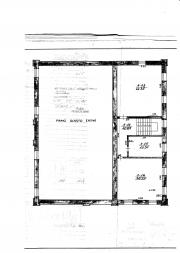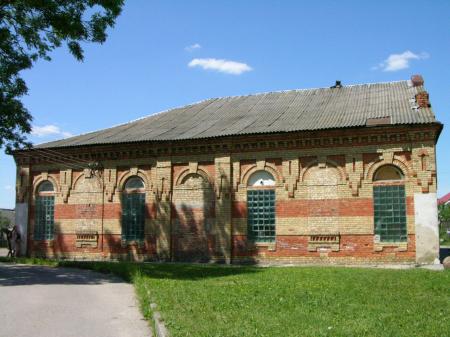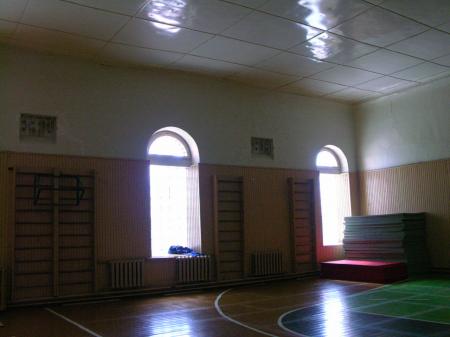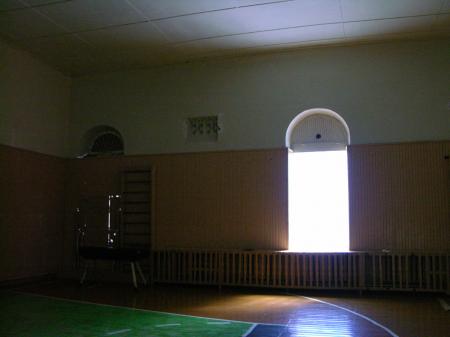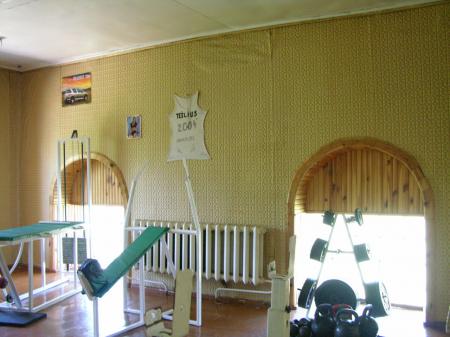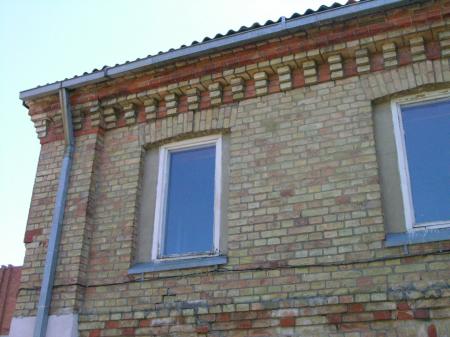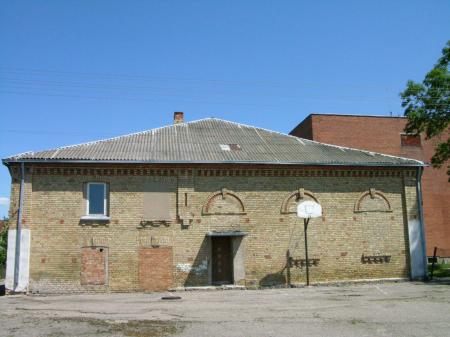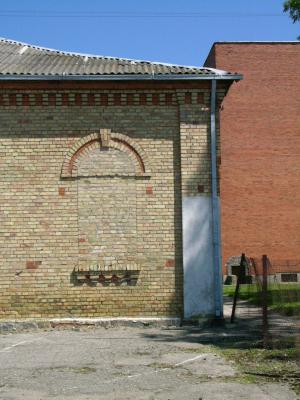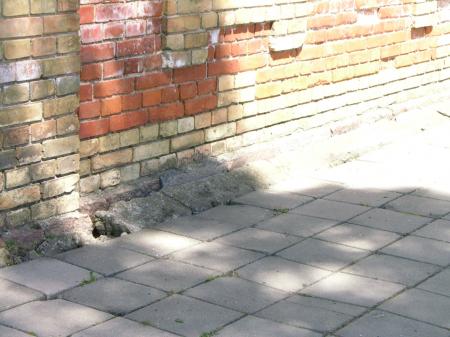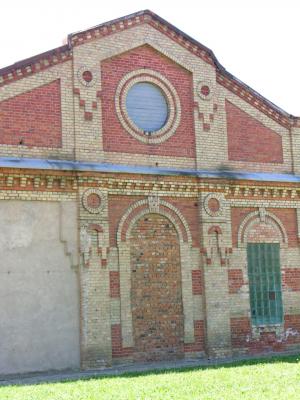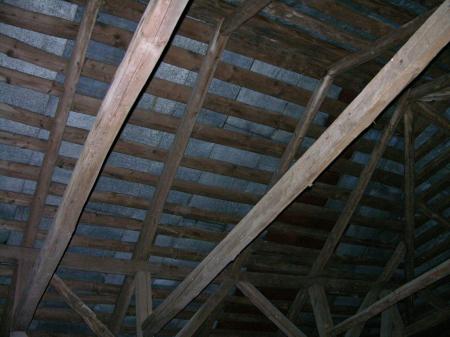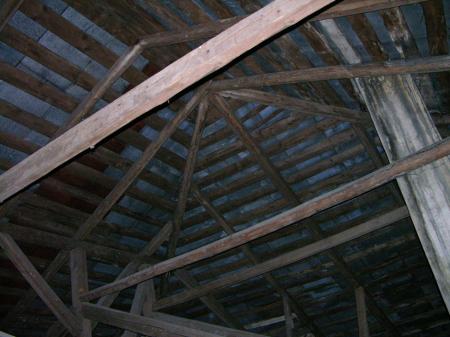Obj. ID: 9249
Jewish Architecture Synagogue in Simnas, Lithuania

The synagogue was built in 1905 on the site of the burnt wooden one. A photograph from 1924 has captured a fragment of its northeastern façade, showing the side entrance to the prayer hall. In addition, the glazing bars are seen in a window across the hall, in its southwestern wall.
The synagogue in so-called “brick style” is built of red and yellow bricks and covered by an oblong hipped roof on a northeast–southwest axis. The structure consisted of a prayer hall in the southeast and additional rooms in the two-storey northwestern side. The prayer hall is broader than long, and a vestibule is situated at the longer side of the building. The façades of the synagogue building are crowned by a cornice with modillions; most elaborate are the southeastern and northeastern street façades, while two others are more modest. The corners and the central bays of the street façades are stressed by lesenes, while “corbelled” lesenes divide the façades into even bays. The bays are pierced by tall round-headed windows, framed by a surround with a keystone. The walls are decorated with horizontal stripes of red and yellow brick; the lesenes are yellow. In contrast, the back façades are only of yellow brick. The most elaborate is the northeastern façade facing Vytauto Street. It’s central bay is occupied by a bricked-up roundheaded opening, formerly an entrance to the prayer hall, with a large oculus in the gable above it. The eastern bay, belonging to the prayer hall, is now bricked up and plastered, but in all likelihood was pierced by tall windows. The northern part, although presumably being two-storey, includes two tall round-headed windows. They are similar to those of the southeastern façade, and like them are at present closed with glass blocks. The brickwork combines yellow and red bricks for the projecting and recessed fields respectively, thus emphasizing the structure of the façade. The southeastern façade facing Laisvės Street is divided into seven even bays. Except for the central one, each bay contains a tall round-headed window, although those of the second and sixth bays are bricked up and others are expanded and filled with glass blocks. The central bay was probably blank, indicating the placement of the Torah ark in the interior. In Soviet times a doorway was cut through it, but currently it is bricked up. The southwestern façade clearly shows the arrangement of the interior: it consists of the northwestern two-storey part, matching the vestibule premises, and the southeastern part, which corresponds to the prayer hall. The windows of the twostorey part are segment-headed and have projecting window sills. An original doorway, broader than the windows, is bricked up, as well as two windows. The southeastern part contained three round-headed windows; today they are bricked up and a rectangular doorway is cut into the westernmost one. This façade is built mainly of yellow brick, while red brick is used for emphasizing the recessed fields. The two-storey northwestern façade is flanked by corner lesenes and divided horizontally by a stringcourse. Both floors have segment-headed windows, and a rectangular doorway is situated in the third bay of the ground floor.
The division of the interior space has changed little. The prayer hall is used now as a gym, and the staircase leading to the upper floor may be the original one.
sub-set tree:
Cohen-Mushlin, Aliza, Sergey Kravtsov, Vladimir Levin, Giedrė Mickūnaitė, Jurgita Šiaučiūnaitė-Verbickienė (eds.), Synagogues in Lithuania. A Catalogue, 2 vols. (Vilnius: VIlnius Academy of Art Press, 2010-12)
Valentinas Brandišauskas, "Fate of Jewish Property in Lithuania during World War II," in Alfredas Jomantas (ed.), Jewish Cultural Heritage in Lithuania (Vilnius: Versus aureus, 2006), 20-70, here p. 56..
CJA & Lita documentation;
Marija Rupeikienė, "Synagogues of Lithuania," in Lithuanian Synagogues (Exhibition Catalogue) (Vilnius: The Vilna Gaon Jewish State Museum, 1997);
Marija Rupeikienė, Nykstantis kultūros paveldas: Lietuvos sinagogų architektūra (Vilnius, 2003), p. 146;
Pinkas hakehilot: Lita, ed. Dov Levin (Jerusalem, 1996), p. 425;
Yad Va-Shem Archives - archives of images, №20217 (ph. 1994);


